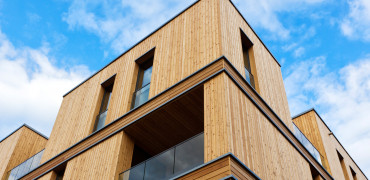According to Christopher Botten from The Better Buildings Partnership 18% of all carbon emissions in the UK come from our commercial buildings. That’s almost a fifth of our total carbon output, which in recent years has been estimated to be 415.4 million metric tonnes.
Here we look at ways to consider a more sustainable future for commercial properties.
Munish Datta, Head of Facilities Management and ‘Plan A’ reveals how Marks & Spencer, a global retailer with operations in 59 international territories, is putting sustainability at the core of its strategy. (22 August 2016).
In 2015–16, Plan A – the M&S blueprint for doing business – delivered a £185m net benefit which the company has been able to reinvest into the organisation. By promoting greater efficiency and sustainability across a number of areas such as energy consumption, logistics, waste reduction and packaging design, M&S is growing its business, while creating a positive impact in its markets, for its customers and crucially on the environments in which it operates.
Life cycle assessment will ensure a sustainable building in both construction and maintenance
Key learning
The 5 key learnings from the Plan A journey are as follows:
1. Set ambitious targets
2. People are your power: engage with them!
3. Celebrate change and innovate
4. Create new partnerships, lead with others
5. Future-proof your business
If we are to try and meet the exacting standards laid out by the government, and of course we should, then it’s never been more important to ensure that our business buildings old and new are sustainable on every level.
The following factors need to be taken into account by both designers and makers in order to achieve a sustainable future.
Location
A well-thought out plan regarding the building’s location can have environmental benefits not only for the building’s own operation, but also by those travelling to and from the location.
By providing other services and facilities at the destination, the impact of fuel emissions isn’t squared on your site alone.
Life Cycle Consideration
Life Cycle Assessment is more typically associated with products than it is with buildings; this is the study to determine the efficiency and environmental effects of a project from its beginnings through its realisation and beyond.
In scoping out a project build, LCA should be used to score the potential of an eco-friendly lifespan, thus ensuring that it will be sustainable both in construction and maintenance.
Our input can make a difference by locally sourcing the building materials, to thorough planning of where and when the materials will be delivered, a shaped focus on sustainability can help contribute to a reduced carbon output and increase operational efficiencies.
Health and Efficiency
A sustainable build should make full use of materials that can boost its eco credentials – both inside and outside.
Insulating the build properly is a vital component of construction, helping to reduce wasted energy by managing the climate more appropriately to the season – saving on energy usage and resultant bills too.
Water management is another important aspect of sustainable building. Experts in the field are always keen to assess how a project with high demand can employ innovative, responsible methods for its collection and usage. The Edge in Amsterdam, for example – which received the highest ever award from BREEAM – uses the rainwater it collects to flush its toilets.
A building that makes proper use of natural resources is one which holds the sustainable edge – consider the use of natural light to brighten up and heat a space, not just to help power it.
The importance of Solar Energy
Conducting in-depth site analysis ahead of the build can also allow you to make the best use of the sun to heat and cool internal spaces throughout the year – through the best practice of passive solar building design. Both new builds and redesigns alike can benefit.
Considering the amount of light and heat you’d expect in a particular location, the siting of windows and doors and their contribution to the building’s solar intake can help to provide a no-cost control on keeping a building at a comfortable temperature – especially when backed with the appropriate insulation.
Monitoring
Once the incredibly complex job of constructing a building using the utmost sustainable measures is complete, there’s still plenty of room for manoeuvre.
As part of the Life Cycle Assessment, work should be done on identifying the aspects of ongoing building operation that could potentially contribute to high carbon emission such as waste disposal, maintenance and powering the facility.
Retrofit Eco Style
If you can’t make a commercial building green from the start you can always take steps to retrofit an existing building.
This includes things like updating the HVAC and plumbing systems, switching to a green energy source like solar power, replacing older windows with more energy-efficient ones, or even something as simple as fixing or plugging up any leaks.
There are financial incentives for retrofitting just like there are from building green from the ground up.
To achieve the expectations of a more eco-conscious and sustainable infrastructure, work must be done on reducing carbon emissions both at home and work. Our future generations will demand it.



